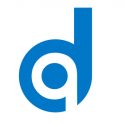Last week, we covered the news that the long-awaited section 508 refresh is finally happening. The U.S. Access Board held a public briefing on the ICT Final Rule last Tuesday, which will be published in the U.S. Federal Register today, January 18. As we explained in our original post, the effective date for enforcement and compliance with this new Final Rule will begin January 18, 2018; 12 months from the day it is published in the U.S. Federal Register.
We were fortunate enough to attend the briefing (and witness history in the making), where the Access Board addressed the changes we can expect to see in the 508 refresh. Timothy Creagan and Bruce Bailey of the Access Board outlined the updates at length during the briefing. We’ve highlighted the five major points to consider regarding the 508 refresh that will likely have the most impact on your organization:
- Compliance Date and Safe Harbor Provision – Compliance with the revised standard will go into effect one year from the day that it is published in the Federal Register. According to the latest news from the Access Board, the Final Rule is set to be published today, January 18, 2017. The Final Rule is effective March 17, 2017, and organizations will have to comply by January 18, 2018. Any information and communication technology (ICT – including websites, web-based applications, and electronic documents) created or altered after the compliance date in 2018 must comply with the new standard. However, the Final Rule includes a Safe Harbor Provision that states:
“legacy ICT that complies with the existing 508 Standards and has not been altered after the compliance date (i.e., one year after publication of the final rule) need not be modified or upgraded to conform to the Revised 508 Standards. However, when existing ICT is altered after the compliance date, such alterations must comply with the Revised 508 Standards.”
Along the same vein, the new safe harbor provision allows for micro-compliance; which is compliance limited only to the elements updated on a page.
- Adoption of WCAG AA 2.0 for Web, Software and Electronic Documents (“content”) – New or altered software (native apps, applications, LMS, etc.), web (websites, webpages, web apps), and digital content (documents, official agency communications, media and data) as well as digital content on mobile devices will now have to comply with WCAG 2.0 AA.
- Update to Section 255 of the Telecommunications Act – Section 255 is the FCC’s set of accessibility regulations for telecommunication equipment manufacturers and service providers. The previous update to section 255 occurred in 2000. The goal of the 255 refresh was to align the regulations with the reality of 21st century telecommunications technology – the smartphone and mobile technology in particular. Not only is telecommunication hardware subject to 255 regulations, but software that is integral to the device – for example the Contacts and phone dialing apps that come pre-loaded on smartphones – must also be compliant with section 255.
- Authoring Tools Compliance – This applies to all authoring tools (such as Microsoft Word, Microsoft Office, DreamWeaver, etc.) These authoring tools must have a mode of operation that allows for the creation of accessible content. In addition to creating content that is accessible, the mode of operation must have accessibility prompts as well as contain accessible templates.
- Functional Performance Criteria – According the the Final Rule:
“the revised requirements include functional performance criteria, which are outcome-based provisions that apply in two limited instances: when the technical requirements do not address one or more features of ICT or when evaluation of an alternative design or technology is needed under equivalent facilitation”
To translate: when a part of your site or application is not accessible either because you are using a technology or a piece of software that isn’t covered under 508 technical requirements (which sometimes happens with the rapid development of web and mobile technology) or because it’s one of those rare situations where technical compliance doesn’t translate to an accessible user-experience, you must then look to the Functional Performance Criteria to determine 508 compliance. The Functional Performance Criteria require that in these cases, you must provide an alternate means of operation according to the type or types of disability that are unable to use your ICT as it is. Previously, 508 did not include these distinctions. The Refresh has also added new requirements for cognitive disabilities, limited manipulation, as well as limited strength issues to the Functional Performance Criteria. These disability groups are often underrepresented in digital accessibility strategy and implementation.
Additional Section 508 Refresh Resources
This is just an overview of the most critical changes to Section 508. The Access Board will be taking a deeper dive into the changes and updates to Section 508 in their Section 508 Refresh webinar, scheduled for Thursday, February 2, 2017 at 2:30pm EST.
You can also check out our Section 508 Refresh eGuide for a better understanding of the current guidelines, the changes, as well as an outline of WCAG 2.0. And be sure to stay tuned for more blog posts with updates and information on the Section 508 Refresh.
And speaking of keeping updated there’s no time like the present to get educated. Visit Deque University to learn more about our comprehensive curriculum for accessibility training. You can also learn more about our accessibility testing tools and contact us for an accessibility assessment – to ensure your organization will be compliant with the changing Section 508 accessibility standards.

